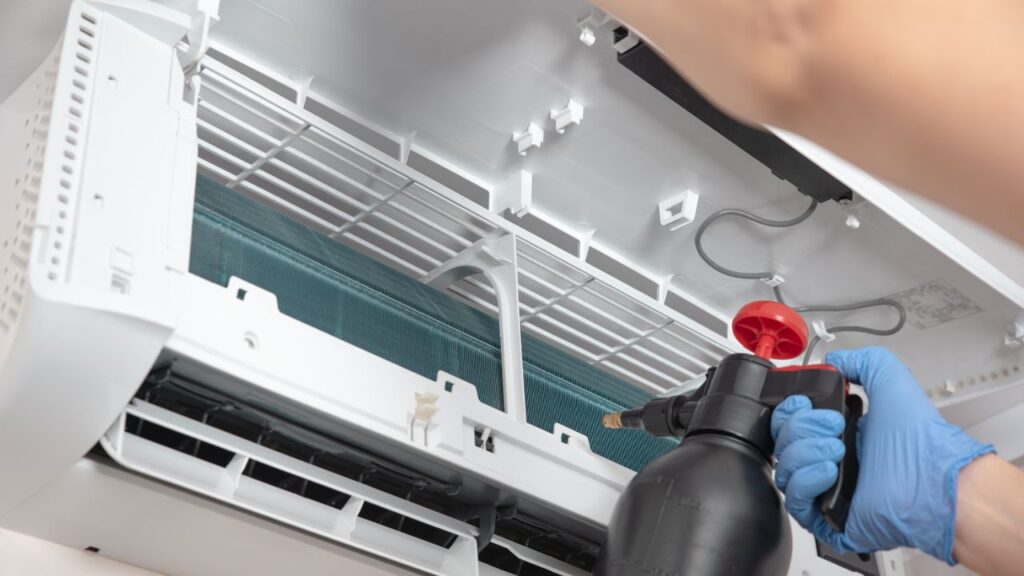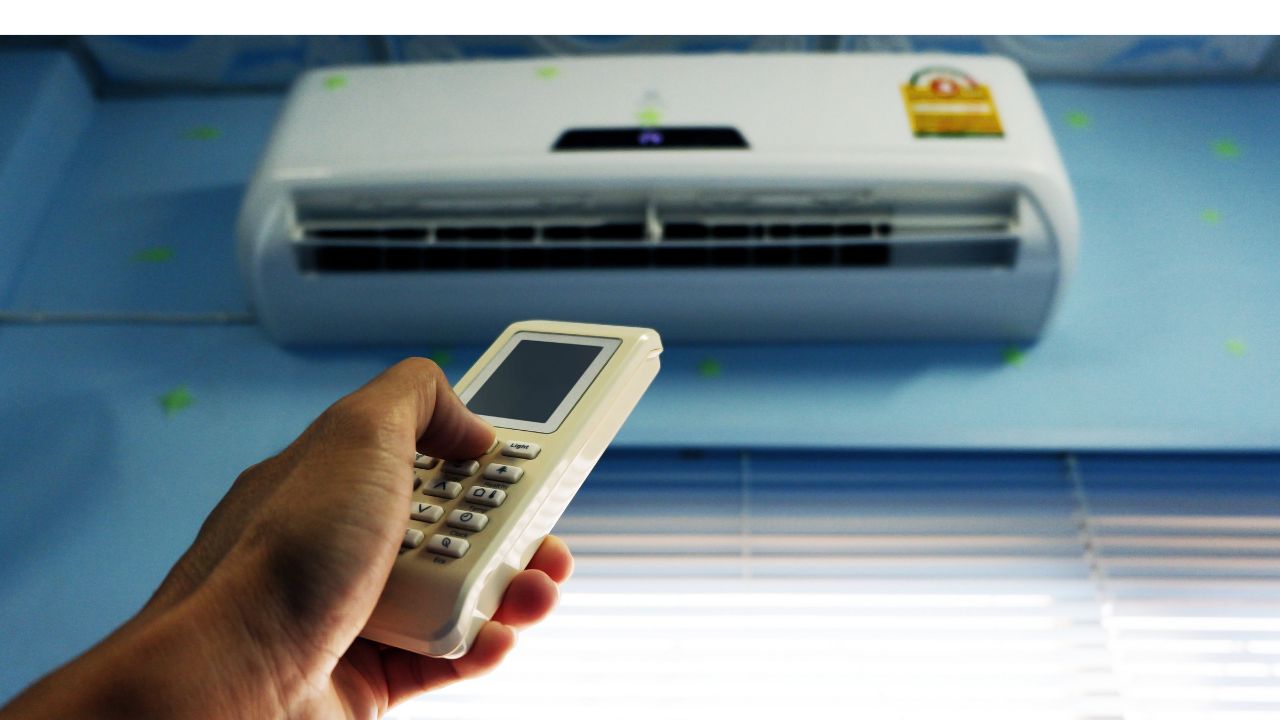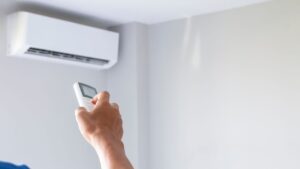Is your aircon leaking water? Don’t panic! While that dripping sound can be stressful, aircon leaks are a common issue, especially here in Singapore. The good news is they are usually fixable and often preventable.
A. Why Do Aircons Make Water Anyway?
Before we get into the leaks, let’s understand why aircons produce water in the first place. Think of your aircon like a cold drink on a hot day. You know how water droplets form on the outside of the glass? That’s condensation!
Your aircon works similarly. It pulls in warm, humid air from your room and passes it over cold coils inside the unit. As the air cools down, the moisture it holds turns into water droplets on these cold coils. This is actually a good thing – it helps dehumidify your room, making it feel less sticky.
B. Why Your Aircon is Leaking Water & How to Spot Them
1. Clogged Drain Pipe
This is the number one reason for aircon leaks. Over time, that narrow drain pipe can get clogged up with dust, dirt, mould, algae, or other gunk. In Singapore’s humid environment, a slimy, jelly-like substance (often called “aircon jelly”) can form from bacterial growth inside the damp pipe, making clogs even more likely.
How it causes a leak: When the pipe is blocked, water can’t flow out. It backs up into the drain pan inside your aircon unit. Once the pan is full, the water has nowhere else to go and overflows, dripping out of the unit.
Signs to look for:
- Water visibly dripping or leaking from the indoor unit.
- Puddles forming on the floor below the unit.
- Water stains appearing on the wall or ceiling near the unit.
- A musty or mouldy smell coming from the aircon, caused by stagnant water.
- Gurgling or bubbling sounds from the unit.

2. Dirty Air Filter
Your aircon’s filter is like its lungs, trapping dust and particles. But if you forget to clean it regularly, it gets clogged!
How it causes a leak: A dirty filter blocks airflow over the cold evaporator coils. Without enough warm air passing over them, the coils get too cold and ice forms. When the aircon turns off or cycles, this ice melts, creating a sudden rush of water that the drain pan can’t handle, leading to overflow.
Signs to look for:
- Water dripping from the unit.
- Reduced or weak airflow coming from the vents.
- The aircon isn’t cooling the room as well as it used to.
- You might see actual ice or frost on the coils if you peek inside the indoor unit.
- Possibly a musty smell due to trapped moisture.
3. Dirty Evaporator Coils
It’s not just the filter; the coils themselves can get dirty.
How it causes a leak: Dirt and grime building up directly on the evaporator coils act like an insulating blanket. Just like with a dirty filter, this prevents proper heat exchange, causing the coils to freeze. When the ice melts, the water overflows the drain pan.
Cleaning these internal coils usually requires professional servicing.
Signs to look for:
- Dripping water
- Poor cooling efficiency
- Maybe a musty smell.
4. Low Refrigerant Level
Refrigerant is the special gas inside your aircon that actually does the cooling. If it’s running low, it usually means there’s a leak somewhere in the system.
How it causes a leak: Low refrigerant causes the pressure inside the system to drop. This makes the evaporator coils get super cold, much colder than they should be, causing them to freeze over. Again, when this ice melts, the drain pan overflows.
Signs to look for:
- Water leaking.
- Aircon blowing warm or not-so-cold air.
- Hissing or bubbling sounds from the unit (this could be the refrigerant escaping).
- Ice forming on the coils.
- Your electricity bill might be higher because the unit is struggling.
Important: Refrigerant issues always need a professional technician. Refrigerant can be harmful, and the leak needs to be fixed properly.
5. Improper Installation
Sometimes, the problem dates back to the day the aircon was installed.
How it causes a leak: If the indoor unit isn’t installed perfectly level, or with a slight tilt downwards towards the drain pipe, gravity can’t do its job. Water collects in the wrong part of the unit instead of flowing to the drain pan and pipe, eventually spilling out. Poorly sealed connections in the system can also cause condensation to form and leak where it shouldn’t.
Signs to look for:
- Leaking water, especially if the unit is relatively new or was recently installed.
- Water pooling around or under the unit.

6. Damaged or Cracked Drain Pan
The drain pan is the catcher’s mitt for condensation. But like anything, it can wear out.
How it causes a leak: Over time, especially in older aircons, the drain pan (which might be metal ) can rust, corrode, or develop cracks. Instead of holding the water and guiding it to the drain pipe, the water leaks straight through the holes or cracks in the pan. A pan that’s constantly full due to a slow drain clog might also rust faster.
Signs to look for:
- Water leaking from the bottom of the indoor unit.
- Visible rust or cracks if you can see the pan. More likely in older units.
7. Faulty Condensate Pump
Not all aircons have this, but some installations require a pump to push the water out, especially if the drain line has to go upwards or is very long.
How it causes a leak: If the pump breaks down or gets clogged with gunk , it stops removing water from the drain pan. The pan fills up and overflows, causing a leak.
Signs to look for:
- Water leak
- The pump isn’t making its usual humming sound when the AC is running, and you can see water sitting in the drain pan.
C. Why a Small Drip Can Become a Big Headache
What’s the danger of ignoring leaks? It’s just a little water, right? Wrong! Ignoring that drip-drip-drip can lead to bigger, more expensive problems:
- Water Damage: That persistent leak can ruin your walls, ceilings, floors, and even furniture. Moisture seeps in, causing ugly stains, warping wood, and potentially leading to serious structural damage over time.
- Mould and Mildew: Damp spots are paradise for mould and mildew. Not only does this cause unpleasant musty smells , but mould spores can worsen allergies and respiratory problems, affecting your family’s health.
- Higher Electricity Bills: Often, the reason for the leak (like a dirty filter or low refrigerant) also makes your aircon less efficient. It has to work harder and run longer to cool your room, which means higher electricity bills.
- Aircon Breakdown: Letting the underlying problem continue can cause more serious damage to the aircon itself, like ruining the compressor. This could lead to very expensive repairs or even needing a whole new unit.
- Safety Risks: Water dripping onto electrical parts is never a good mix. It creates a risk of short circuits or, in rare cases, even fire.
Remember, the leak itself is often just a symptom. Fixing the leak usually means fixing an underlying issue that affects your aircon’s health, efficiency, and the quality of the air you breathe.
If you want to try fixing the aircon leaks yourself, here are some quick tips!
It is often better to embrace the power of prevention. Regular aircon servicing is your best bet for a cool, comfortable, and leak-free home here in sunny and humid Singapore. Stay cool!









